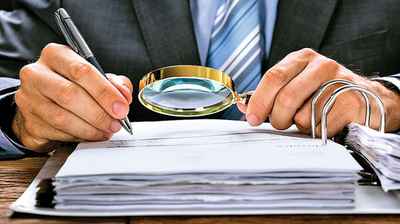The business strategic decisions and actions taken by a private firm absolutely require accurate and trustworthy facts. There are steps you can take to improve your confidence that information flowing from different parts of your firm is up-to-date, precise, and trustworthy. This is where the internal control system comes in. In this article, we’ll help you understand what internal controls for accounting are, the procedures as well as examples. Read On…
What Are Internal Controls?
A company’s internal controls are the processes, regulations, and procedures it puts in place to combat fraud, promote accountability, and assure the accuracy of financial and accounting information.
In other words, internal control is a process that ensures an organization is meeting its objectives with regard to operational effectiveness and efficiency, as well as providing accurate financial reporting and complying with applicable laws, policies, and regulations. Internal control is a broad concept that encompasses all that an organization does to control the risks that it faces.
It is a method via which the allocation, management, and evaluation of an organization’s resources can be carried out. It plays a significant part in identifying fraudulent activity and putting a stop to it. Likewise, it helps in guarding the organization’s resources, both material (like property and machinery) and intangible (like intellectual property).
At the organizational level, the objectives of internal controls related to the dependability of financial reporting, the provision of timely feedback on the accomplishment of operational or strategic goals, and the observance of laws and regulations. At the level of an individual transaction, it refers to the measures that are taken to accomplish a particular goal.
How Does Internal Control Work?
Internal control system procedures limit the amount of variation in the process, which results in outcomes that are easier to anticipate. Since the accounting scandals of the early 2000s, having strong internal controls has become an essential business function for every single corporation in the United States. As a result, in 2002, Congress passed the Sarbanes-Oxley Act with the goal of shielding investors from deceptive accounting practices. It also boosts the precision and dependability of any information corporations disclose.
The fact that managers are now accountable for preparing financial reports and audit trails as a result of this development has a significant impact on the governance of corporations. Hence, managers who are guilty of not properly developing and administering internal controls are subject to severe criminal penalties.
An examination of the processes and documentation that went into the preparation of the financial statements forms the basis for the auditor’s opinion. An evaluation of a company’s accounting procedures and internal control and the formation of an opinion regarding the adequacy of those procedures and controls is the purpose of an audit.
An organization’s internal controls, as well as its corporate governance and accounting procedures, are subjected to scrutiny during the course of an internal audit. They ensure compliance with laws and regulations, accurate and timely financial reporting, and data collection. They also help to maintain operational efficiency by identifying problems and correcting lapses before they are discovered in an external audit.
There is no such thing as a system of internal control that is similar to another. Yet, many fundamental principles surrounding financial integrity and accounting standards have evolved into standard management practices. Internal controls can be expensive, but when they are effectively implemented, they can help streamline operations and boost operational efficiency, in addition to reducing fraud.
Types of Internal Controls
Internal controls fall into two primary categories: preventive and detective measures. Basically, both types are necessary for an efficient internal control system, as each one fulfills a particular function in the system as a whole. Nevertheless, there are certain questions you need to ask to help determine the proper control while you are performing routine procedures or when you are thinking about adopting a new procedure or process. Control is necessary to determine whether or not a control is necessary. Ask yourself;
- What could possibly go wrong here?
- What preventative measures do you have in place to make sure that nothing goes wrong?
- In what ways can you check to be sure nothing went wrong?
Preventive Controls
The principle of separation of roles is at the core of many preventive controls. This type of internal control system aims at limiting the likelihood of errors and fraudulent activity before they take place. When it comes to quality, preventive controls are absolutely necessary because of their proactive nature and their concentration on quality.
The following are some examples of preventive controls:
- Segregation of duties
- The prior authorization of activities and business deals (e.g., travel authorization)
- Access controls (such as password authentication)
- Physical controls over assets ( locks on doors and safes to store cash and checks)
- Employee orientation and screening
Detective Controls
Detective controls are checks that a company runs after completing a transaction. This, however, is in order to identify any faults or problems that may have happened. Detective controls are necessary because they provide evidence that preventive controls are acting as they were designed to and also offer an opportunity to uncover abnormalities after the fact. This makes detective control a vital component of any control system.
The following are some examples of detective controls:
- Reconciliation of the department’s transactions on a monthly basis
- Transaction and activity reviews (reviewing the performance of the organization)
- The taking of actual inventories, such as a monetary headcount or a stockpile tally,
Internal Controls for Accounting
Generally, when we talk about internal controls, we are referring to accounting policies and auditing processes. These are the measures that ensure that the financial information of a corporation is accurate and trustworthy. Businesses usually establish systems of internal controls in order to accomplish a variety of goals. A firm’s level of resistance to fraud and accounting malpractices can be inferred from the kind of internal controls that it employs. This determines how compliant the company will be with credible accounting and audit reporting standards.
In other words, internal controls for accounting are methods, procedures, and policies that, in addition to enhancing responsibility and ensuring financial integrity, also work to prevent fraud. These controls make it possible for a corporation to comply with the rules of the state while still providing timely and accurate financial information to its customers.
How Should You Utilize Your Internal Controls?
Not only can internal controls assist a business in becoming more dependable and effective. They also contribute to an increase in the correctness of that business’s financial reports. Generally, when a corporation follows internal control procedures and regulations, it demonstrates that it complies with generally accepted accounting principles. This, nevertheless, will assist the company in detecting and correcting problems in financial reporting if and when they occur.
Meanwhile, in the absence of adequate internal controls, a company’s financial statement will likely be prepared with significant inaccuracies. In addition, prior to making an investment decision, investors investigate the quality of the company’s internal controls. Hence, companies need to implement internal controls as a component of their corporate governance. This is in accordance with the Sarbanes-Oxley Act of 2002. As such, these controls protect investors against fraudulent actions.
Principles of Internal Control
- Establish responsibilities
- Maintain adequate records.
- Insure assets and bond out key employees.
- Separate recordkeeping from the custody of assets
- Divide responsibilities for related transactions evenly.
Importance to Auditors’ Accounting Internal Controls
The reliability and accuracy of a company’s financial accounting are directly correlated to the internal controls, accounting processes, and procedures that are in place within that business. Likewise, auditors investigate whether or not a firm has sufficient internal control systems in place. Also, whether or not the company’s financial statements comply with generally accepted standards In addition, auditors are responsible for evaluating the efficiency of a company’s accounting internal controls and forming conclusions based on their findings as part of the auditing process.
Following the Sarbanes-Oxley Act’s passage by Congress in 2002, managers were deemed legally liable for the implementation of internal controls. The establishment of internal controls within an organization as well as the efficient management of those controls fall under the purview of the company’s managers. Nevertheless, a corporation can find itself in disarray or an accounting crisis if it does not have enough internal controls.
Why Internal Controls are Necessary
Internal controls have the primary purpose of ensuring that a company complies with all applicable accounting laws and regulations. This enables a corporation to recognize its accounting issues and make corrections to them even before the beginning of its internal audits. However, it is essential to keep in mind that the internal controls of different firms operate in very different ways. As a result of the absence of a standardized set of internal controls that must be implemented by all businesses, there is considerable variation in the kinds of control systems utilized by various businesses.
Internal controls, in addition to avoiding fraudulent actions, assist a firm to promote a high degree of effectiveness, which is why they are so important. Internal controls have a linkage to operational efficiency in a company.
Drawbacks of Internal Controls
In spite of the fact that they are critically important for maintaining accurate financial records and optimizing business operations, internal controls have a few limitations. Considering that the efficiency or functionality of a firm’s internal controls is usually a subject of human views and judgments, it is simple to get around these checks and balances that are supposed to protect the company.
Also, auditors sometimes base their conclusions on how effective the operations of a firm are, in spite of the fact that they have not given the company’s accounting system internal control procedures and policies their adequate or serious commitment.
Internal Control Procedures
An accounting system must have internal control in place to ensure its continuing dependability. These controls consist mainly of rules and procedures. In the realm of accounting, accuracy and dependability are of the utmost importance. Internal control procedures in accounting fall into a total of seven distinct categories, each of which plays a significant role in detecting errors and thwarting fraudulent activity before they escalate into more serious issues.
The seven procedures that make up an organization’s accounting system’s internal control procedures include:
#1. Separation of Duties
Separation of duties entails the sharing of obligations for bookkeeping, deposits, reporting, and audits between two or more individuals. The more distinct each person’s responsibilities are, the lower the likelihood that any worker will commit fraudulent acts. Allocating responsibilities among two or more people in a small business with only a few accounting personnel might serve the same purpose as requiring key activities to be evaluated by coworkers. This is especially useful for businesses that are just starting out.
#2. Accounting System Access Controls
With the help of passwords, lock-outs, and electronic access logs, it is possible to protect an accounting system from intruders and help determine the source of any emerging errors or discrepancies. Furthermore, comprehensive access tracking can thwart attempts to gain unauthorized or fraudulent access.
#3. Accounting System Access Controls
In the course of a physical audit, cash and other tangible assets are recorded in the accounting system. This includes inventories, materials, and tools. Physical counting can unearth inconsistencies in account balances by avoiding the use of electronic records entirely. One that you might not be aware of before. Counting cash at retail establishments may take place on a regular basis or perhaps many times on a daily basis. In addition, occasionally, perhaps once a year or once every three months, you ought to carry out the most labor-intensive operations, such as counting the inventory by hand.
#4. Standardized Financial Documentation
Record keeping can be more consistent over time if you standardize the documents you are using for financial transactions such as invoices, internal material requests, inventory receipts, and travel cost reports. This can assist in maintaining the integrity of the records. In addition, when looking for the cause of a discrepancy in the system, using standard document formats might make it simpler to check previous data and narrow down the possible causes. However, when there is a lack of consistency, it is possible that certain aspects of the review will be missed or misconstrued.
#5. Daily or Weekly Trial Balances
A double-entry accounting system enhances the level of trustworthiness because it ensures that the books are constantly in balance. A double-entry system, however, can still be thrown off balance at any given moment because of errors. Nevertheless, calculating trial balances on a daily or weekly basis might help you find and explore any anomalies in the system as soon as possible.
#6. Periodic Reconciliations in Accounting Systems
When you perform accounting reconciliations on a periodic basis, you can make certain that the balances in your accounting system sync with the balances in other entities’ accounts, such as banks, vendors, and lending clients. For instance, when you perform bank reconciliation, you will compare the cash balances and records of deposits and revenues in your accounting system with those in your bank statements. The disparity between these supplementary accounts can disclose flaws or discrepancies in your own accounting, or perhaps highlight that the inaccuracies may originate from the other parties.
#7. Approval Authority Requirements
It is possible to add another layer of accountability to this accounting records by requiring particular managers to allow certain sorts of transactions. This will demonstrate that the relevant authorities have observed, evaluated, and given their approval to the transactions in question.
Generally, requiring approval of substantial payments and expenses will prevent dishonest workers from conducting significant fraudulent transactions with corporate funds. Knowing there is a necessity for approval, they will be less likely to engage in such activity.
Conclusion
A company’s internal control system can give a fair guarantee, though not an absolute one, that such a company will achieve its organization’s goals. The idea of reasonable assurance denotes a high level of assurance seeing a limit as a result of the costs and benefits of putting in place progressive control mechanisms.
When an organization has strong internal control, it ensures that its financial reporting is accurate. Likewise, it ensures that it complies with the majority of the rules and regulations that are relevant to its industry. However, whether or not an organization is successful in achieving its operational and strategic goals may depend on factors that are external to the firm, such as the level of technological advancement or the level of competition.
Internal control procedures can only offer timely information or feedback on progress toward the fulfillment of operational and strategic objectives. Hence, it can not ensure the achievement of these objectives.
Internal Controls FAQs
Who is responsible for internal controls?
In the CSU’s internal control system, everyone has a role to perform. In the end, it is up to CSU management to make sure that enough safeguards are in place. It’s up to each and every employee to make this internal control system work.
What is internal auditing?
Internal auditing, according to the IIA; is a value-adding, objective assurance, and consulting activity that helps an organization run more efficiently.
What are the four purposes of internal control?
The 4 basic purposes of internal control and procedures are;
- Safeguarding assets
- Financial statement reliability
- Operational efficiency
- Compliance with management’s directives.
What is the most important aspect of internal control?
Personnel are the most critical component of internal control. One can neglect other controls once staffs are competent and trustworthy. And, at the end of everything, credible financial statements will still come out.
Related Articles
- Accounting Systems: Definitions & Guide To The Best Accounting Softwares
- Financial Audit: All you need, Simplified!! (+ Detailed pdf)
- Risk Management Strategies: 5+ Strategies You Can Follow Now!!!
- Risk Assessment: Definitive Guide to the Risk Assessment Process
- What Is BUSINESS CYCLE?- Definition, Internal and External Causes
- CAPITAL CONTROLS: BEST PRACTICES WITH PRACTICAL EXAMPLES
- UNEARNED REVENUE: Definition, Examples & Calculation






